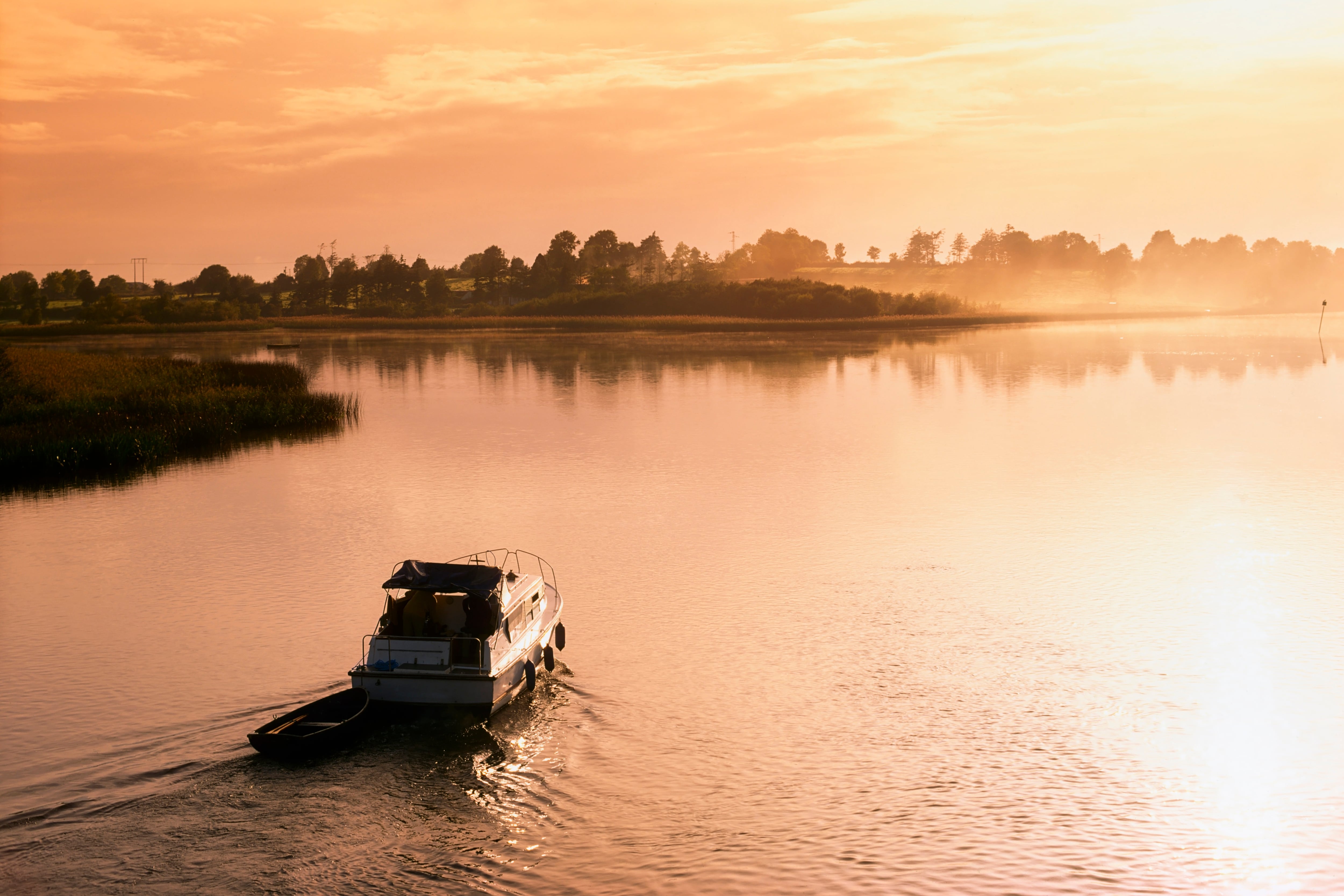During the week, inspired by This Is Your River, a community documentary about the Dodder that was screened in Tallaght’s Rua Red cinema last month, I stopped by the Dropping Well pub in Milltown, beside the river, and ventured upstream. The noise of buses and cars entering the city filled my ears, but my eyes were fixed on the water, scouring it for a flash of exotic blue.
I was in luck. From the side of a large weeping willow whose branches draped into the water, a kingfisher swooped out, orientated itself left with a flick, and flew upstream in the middle of the river before vanishing into the bank. Kingfishers are notoriously shy birds, so having such a front-row seat felt remarkable.
It was a soft, overcast day; against the shades of green of the trees and shrubs, the kingfisher’s contrasting plumage – vibrant cyan blue on its back, with a breast of burnished copper – flashed brightly. Standing in the capital city, having just seen this feathered ball of tropical colour hurtle upriver, it was hard not to wonder: “What on Earth are you doing here?”.
[ Michael Viney: Everyone remembers their first kingfisherOpens in new window ]
The answer, delightfully, is simple: it’s here because the Dodder is slowly returning to life. Kingfishers are almost entirely dependent on aquatic creatures to survive, and during the breeding season, they need to catch up to 120 small fish daily, such as minnows and sticklebacks. They’ll only hang around a river if it can give them what they need.
READ MORE
For decades, the Dodder has been blighted and abused as a bin for our rubbish and other pollutants. RTÉ’s online archive has a news clip from 1965 about a chemical spill. “It’s never very clean at the best of times,” says a reporter, standing on the banks of the Dodder beside a group of sick and dying swans. “It has become a place of death.”
But nearby locals are doing what they can to bring life back. With more than 1,000 members, the Dodder Anglers is the largest angling group in Europe. The Anglers have long had their eyes on the river, doing what’s needed to support the wild brown trout. Every year they stock it with a couple of hundred farmed trout, which helps to keep the 250 or so younger members engaged.
More recently, in the past decade or so, the Dodder Action group of 1,400 volunteers has undertaken weekly clean-ups to clear rubbish. They put on talks in local schools, keep an eye on proposed developments that might negatively impact the river, and work with scientists from DCU’s Water Institute to regularly test the waters.
Given the pressures on it from its location, the river’s condition is remarkable. From where it takes life in Kippure in the Wicklow Mountains to the point where it meets the Liffey in the city, the Dodder winds its way around Tallaght, Firhouse, Rathfarnham, Rathgar, Donnybrook and Ballsbridge before joining the Liffey at Ringsend and flowing into Dublin Bay.
But there’s a way to go before it is recovered. According to the Environmental Protection Agency, it’s in top condition in the upper reaches of Wicklow. But it struggles as it travels through Dublin, where raw sewage continues to flow into it. In these lower sections, the quality doesn’t meet the minimum legal requirements set by our water laws.
One culprit is the toxic blend of soap, bleach, detergents and car shampoo that continues to seep into the river, depleting insect and fish life. Botched plumbing jobs – relatively simple to fix – are partly to blame, as dirty water that should be piped into the sewage system is wrongly fed into the water system, which then flows into our waterways, as does detergent-filled water from car washing in streets and driveways. All these chemicals make their way into our rivers, killing the life inside.
The prospect of freeing up the Dodder could have the most significant impact on returning it to its former glory. The river is seriously fragmented along its entire length, with an estimated 189 man-made barriers, many obsolete, preventing the free movement of migratory fish and sediment along its 26km course. Atlantic salmon, for instance, are found in the lower parts of the Dodder, but they’re stuck there, impounded, and unable to move upstream.
These concrete constructions, such as weirs and bridge aprons, undermine climate and flood resilience, destroy the river’s health, and limit biodiversity. Nutrients pool and become concentrated, and water temperature increases around the barriers, which is dangerous to fish life.
Removing these relict obstacles when our rivers are under increasing stress is an exciting prospect for the Dodder and will be a boon for the life that depends on it. Informing citizens of the adverse effects of fragmentation on river life and the value of getting rid of barriers is essential, given the cultural attachment some of these structures still hold.
Cities that invest in cleaning up – and freeing up – their rivers will reap the rewards, not least in providing residents with natural landscapes to enjoy. The efforts shown by locals mean that with a bit of luck, the Dodder is on course to reach higher standards of water quality and could become one of the finest city rivers in Europe – an example of what’s possible when we clean up our act and let nature back in.
For more information on Dodder Action’s This Is Your River documentary, visit dodderaction.org.














